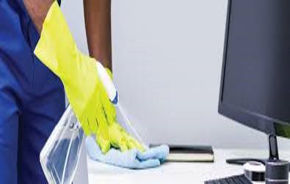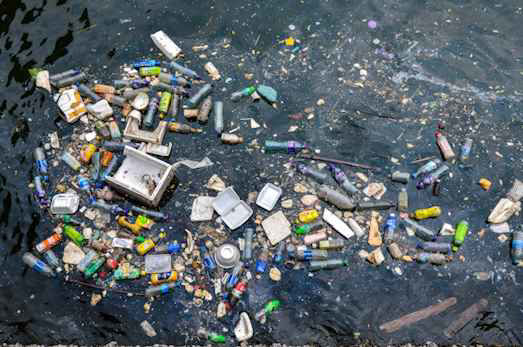(Photo: Plastic pollution is a major issue in coastal cities such as Hong Kong. Credit: Stefan Irvine/LightRocket via Getty Images)
For a seabird, it can be tough to tell the difference between a squid snack and a piece of plastic debris. This mix-up can have devastating impacts for the birds and their young, according to a recent study published in Science Advances.
Scientists analyzed the changes in more than 700 proteins found in plastic-ridden sable shearwater seabirds found on the remote Lord Howe Island between Australia and New Zealand. They discovered that the plastic ingested by the birds has left its mark; the contaminated birds showed signs of chronic disease and neurodegenerative issues that could harm their ability to find mates.
This adds to a wide body of research on the detrimental effects of plastic pollution on marine species. The ocean plastic problem goes deeper than we thought—literally—with microplastic fibers lingering more than 3 miles below the surface, according to a separate new study. Even marine protected areas that are untouched by most human activity are contaminated.
As plastic production continues to rise, current recycling processes aren’t keeping pace and traditional conservation measures are proving ineffective. Instead, experts say, we must tackle plastic pollution and its trickle-down health impacts at the source.
An Unnerving Crunch: A small volcanic landform in the Tasman Sea, Lord Howe Island boasts pristine beaches, lush green mountains and a wealth of wildlife. With a residential population of just around 300 and strict limits on tourism, human activity is limited.
But that doesn’t mean our footprint on the island isn’t large. An international research group known as the Adrift Lab has long documented the impacts of marine plastic pollution on Lord Howe Island’s seabird populations.
During this year’s assessment, one of the sable shearwater chicks that the scientists tested broke an unsettling record: It had 778 pieces of plastic lodged in its body. Since the chick was just around 80 days old, this roughly equates to its parents feeding it 10 pieces of plastic each day of the bird’s life.
A number of birds across the island had enough plastic to literally make a crunching noise when researchers gently pressed their stomachs. (The Washington Post recently published the audio of this noise if you want to hear it for yourself.)
For their study published in March, the scientists wanted to focus on the impact of plastic ingestion on protein composition, which can drive a number of functions throughout the body. They found that seabird chicks with high levels of plastic exposure had protein markers indicative of liver and kidney diseases and neurodegeneration. For example, birds with high levels of plastic in their bodies had lower levels of a protein called brain-derived neurotrophic factor, which facilitates the growth and survival of certain neurons, including those that help birds recognize each other’s song. This has implications for the long-term survival of the species, the study’s authors say.
“Our results suggest while not all birds die from plastics exposure, they may have health issues and suffer from reduced cognitive functions, including those needed for courtship (such as song),” several of the study’s authors wrote in a recent article for The Conversation. “This may make it more difficult for them to successfully find mates and produce chicks.”
The direct impacts of large plastic and debris pollution are fairly obvious. Research suggests that more than half of the world’s sea turtles have ingested plastic at some point in their lives, which can rupture internal organs or cause intestinal blockages. As I’ve reported in the past, whales are frequently entangled in fishing gear.
But this recent study zeroes in on the insidious effects of plastic ingestion on the body’s internal processes, which can be difficult and time-consuming to unravel, the study’s authors say. Plastics are infused with a slew of chemicals for different reasons, such as making them more colorful or flame retardant. In fish, there is evidence plastic particles and associated chemicals can disrupt hormone levels, which can damage their reproductive organs.
This could spell trouble for humans, too. Researchers recently tested around 180 seafood samples either bought at the store or obtained from a fishing boat in Oregon, and detected microplastics in 99 percent of them, according to a January study.
Pervasive Plastic: In recent decades, plastic has been detected in some of the furthest corners of the world, from the top of the French Pyrenees mountains to completely uninhabited islands. In the ocean, debris tends to congregate in rotating currents called gyres, which have formed startling mounds of floating trash, such as the Great Pacific Garbage Patch.
More recently, scientists have used new tools to investigate deep below the surface—and uncovered an abundance of microplastic fibers littering the seafloor, Nature reports. Some estimates suggest that there are up to 11 million tons of plastic in the seabed, which is 100 times more than what is on the surface. In many cases, tiny fish and crustaceans that live deeper are ingesting more microplastics than those closer to the surface, a 2023 study found.
“It’s really alarming to think that these non-migratory organisms, that are thought to remain relatively quiescent [inactive] at depth for their entire life, are being exposed to plastic,” Ryan Bos, a marine researcher at Harvard University, said in a blog post from the National Oceanic and Atmospheric Administration, which supported the research.
As research on plastic pollution and its health impacts piles up, the top question remains: What do we do about it? Designating zones that restrict human activity—dubbed marine protected areas—has long been a strategy to protect marine life and coastal ecosystems. But recent studies show that plastic pollution frequently crosses such boundaries. Meanwhile, a number of technologies have emerged to help clean up existing pollution in the ocean, though researchers point out that this equipment itself could harm marine life by sweeping it into nets.
The key, experts say, is slowing plastic production at the source. For over two years, more than 175 countries have been negotiating a legally binding global plastics treaty, which was supposed to be finalized last December but was postponed following disagreements on the scope of the document, as my colleague James Bruggers reported. Primarily derived from fossil fuels, plastic is a major commodity for many countries and companies, so delegates are hesitant to make concessions on measures that would limit production.
The next round of negotiations will take place in August. Between now and then, an estimated 140,000 truckloads worth of plastic will be dumped into the world’s oceans, rivers and lakes.











